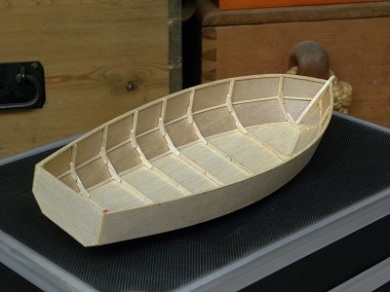A post called ‘A Bite-Sized Memoir’ by the talented blogger Noelle Granger over at SaylingAway talks about her mother being good with her hands. That got me to thinking, which can be a dangerous thing (‘step awayyyy from the brain, step awayyyy from the brain’) but stick with me for a minute.
‘Common knowledge’ tells us that men are the ones who are handy. My own experience has shown me that this is not fair to the fairer sex. My own mother was good with her hands, did all kinds of sewing, made toys for us, and when she was cutting the kernels off the cob of sweet corn to make creamed corn it was like watching a machine. I tried to imitate her and came close to slicing my fingers off. This is not to take anything away from my dad, who was a minor genius at building stuff, but women too are good at using their hands.
Example 1: I worked at a shipyard, in years past, as a mechanical engineer. The yard built Liquid Natural Gas (LNG) carriers, which is a very particular type of ship. LNG is shipped cryogenically; the gas is cooled until it is a liquid. To contain this, the ship is made into a giant Styrofoam cooler. Ok, they don’t use Styrofoam, they use balsa wood and task specific insulation products, but basically that’s what it is. To seal the cryogenic liquid in place there is a corrugated stainless steel liner installed inside the insulated box. This liner is thin and welding the sections together must be done by hand and is a very delicate task. The yard had to establish a specific welding school to do this type of welding and guess what they found? In general, women were better at this type of welding than men. It was delicate, fine motor skill work and overall the gals just left the guys in the dust.
Example 2: Rosie the Riveter. Both in WWI and WWII, women were called upon to fill the trades in industry because the men were being called upon to fight. In both conflicts women performed admirably, doing all the jobs that the men did from welding to plumbing to running metal lathes. And while we’re talking about contributions to war efforts, women also performed well as delivery pilots for aircraft; they flew them from the factories to the airfields and sometimes even overseas. Consider that usually pilots must be certified to fly individual types of aircraft before they are allowed to solo on their own. These women pilots were flying everything from observation aircraft to fighters to four engine bombers day after day. Exceptional people all.
Example 3: Mama Wright. Not widely known is that fact that the Wright brothers got their mechanical expertise from their mother. Their father was an Anglican bishop, a scholar, knew several languages, but was a complete dud when it came to using his hands. She was the one that taught them how to use tools and encouraged them to experiment and design things for themselves.
I’m sure everyone can think of their own examples, these are the ones that just came easily to mind for me. Pardon me please for getting up on my soapbox, but I just see ‘common knowledge’ as giving short shrift to gals in this. So the next time someone spouts off ‘common knowledge’, remember the song from Porgy and Bess, ‘It ‘taint necessarily so.’





